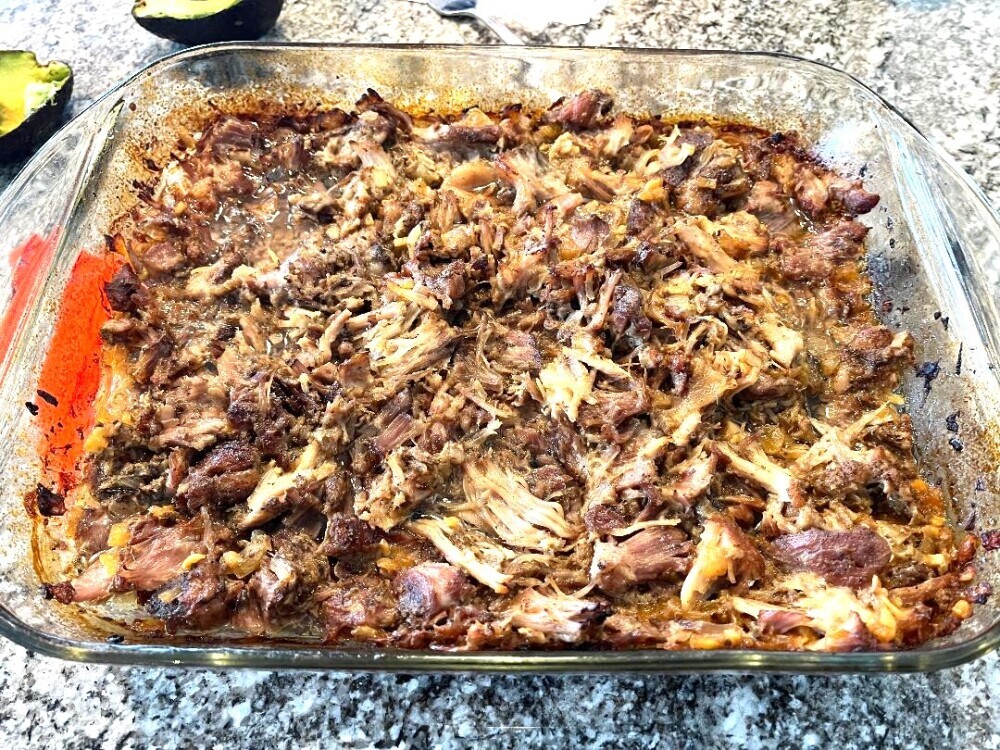Mexican Carnitas

Carnitas, which means ‘little meats’ in Spanish, has deep roots in Michoacán, a state in western Mexico recognized as the birthplace of this beloved dish. Its origins go back hundreds of years, becoming an integral part of Mexican culinary heritage. The historical tradition involves slow-cooking pork in its own fat, a method that’s as much about practical preservation as it is about enhancing flavor.
The cultural significance of carnitas stretches beyond its ingredients or methods. It represents the ingenuity of utilizing local resources to create a dish that’s both flavorful and filling. In Mexican culture, food isn’t just sustenance; it’s a gathering point, and carnitas have played this role wonderfully.
Traditional preparation involves large copper pots where pork is meticulously cooked until it achieves a perfect blend of tenderness and crispiness. Each region might put its spin on the process, adding spices or local herbs, but the basics remain consistent—a testament to its lasting appeal.
Carnitas aren’t just a weekday meal; they’re a staple in celebratory events and communal gatherings. Whether it’s a family reunion, a festive holiday, or a local fair, you’ll often find carnitas gracing the table, symbolizing hospitality and shared joy.
Carnitas in Contemporary Cuisine: A Fusion of Flavors and Traditions
Today, carnitas have adapted and found a place not just within traditional Mexican cuisine but also as a beloved dish worldwide. As people experiment with cooking styles and flavors, carnitas have taken on new, exciting forms that still pay homage to their roots.
Modern variations often introduce different cuts of meat or innovative cooking techniques, like using slow cookers or even air fryers, to bring out distinct textures and tastes. This flexibility makes carnitas a popular choice for home cooks wanting to meld traditional methods with modern convenience.
Carnitas are now served in various dining contexts, from casual street food stalls to upscale restaurants, showcasing their versatility. Tacos, burritos, and quesadillas filled with this savory pork have become a staple menu item, expanding the appeal far beyond Mexico’s borders.
Globally, carnitas have been embraced in many cuisines. You’ll find them nestled in American breakfast burritos, adding a Mexican twist to classic Koran barbecue wraps, or even sprinkled over Italian-style pizzas. This international embrace highlights the dish’s universal allure.
Health is at the forefront of many contemporary adaptations. Some opt for leaner pork or substitute entirely with poultry to suit dietary preferences, ensuring everyone can enjoy the robust, rich flavors of carnitas without compromise.
Ingredients
- 4 to 5 pound boneless pork butt/shoulder
- 1 large onion diced
- 6 garlic cloves minced
- 3/4 cup freshly squeezed orange juice
- 1 tbsp oregano or Mexican oregano
- 1 tbsp cumin
- 1 tbsp kosher salt
- 1 tsp black pepper
Instructions
- Preheat oven to 300 degrees F (149 degrees C)
- Combine the oregano, cumin, kosher salt, and black pepper together and mix them well
- Add meat to 9/13 and 3 inch deep glass baking dish
- Coat all sides of the pork butt with the mixed spices
- Add orange juice to baking dish with meat and spices
- Add onion and garlic to baking dish
- Cover baking dish with foil and vent it slightly
- Place in oven for for 4 1/2 hours
- Remove from oven and remove foil, shred meat with fork and knife
- Place meat back into oven, but this time without the foil, and bake an additional 30 minutes, this will allow meat to get a little bit crispy
Serve on tacos, burritos, on a plate with Mexican rice and refried beans. It even tastes good on pizza. Eat it however you like.
Enjoy, but don’t get addicted. It is so good!
